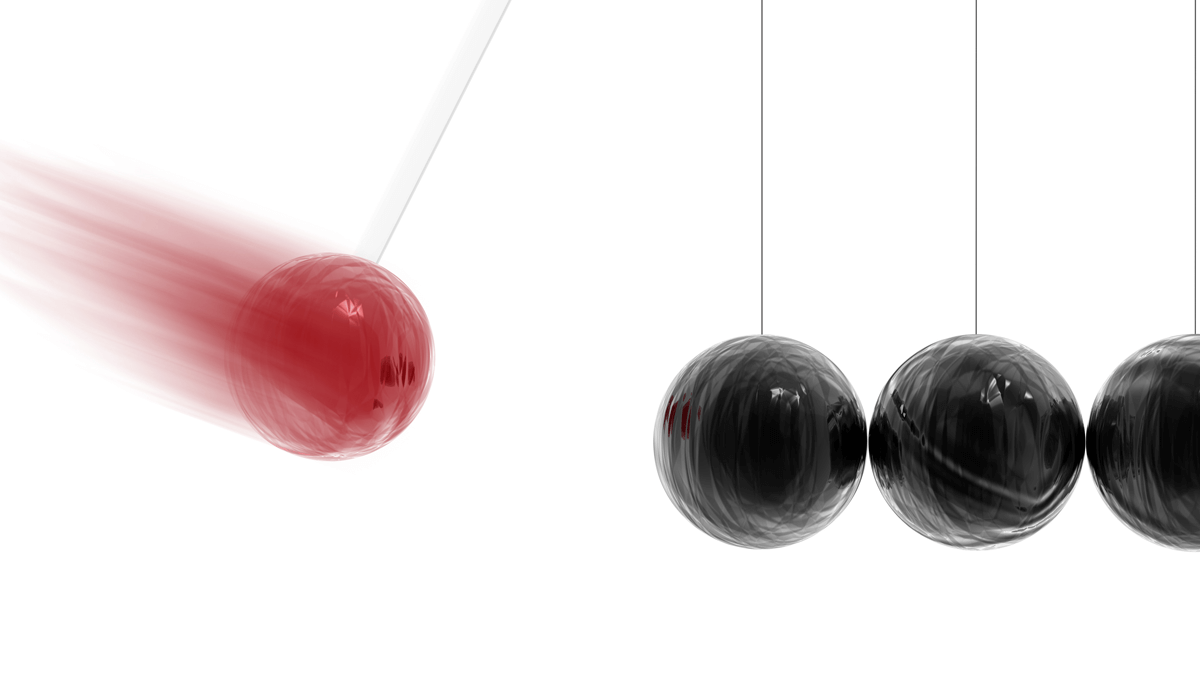During the Vietnam war, the US was still using its cold war approach of “problem as given”… applying prescribed responses for a long list of scenarios. This was a disaster in the face of evolving threats. Now their protocol is “problem as understood”… developing solutions only after the problem is well defined. Is your company using “cold-war innovation,” or does it place a high priority on learning what customers truly want before developing products for them?
More in e-book, Leader’s Guide to B2B Organic Growth
Are you Newton’s object continuing in the same direction and speed… or are you the force acting on the object? Your company may think it can keep doing what it’s always done. But if your competitors learn how to understand unmet customers’ needs first, they will be the force that changes your direction (down) and speed (slower)… in their favor. Inertia is not your friend. Learning and change are.
More in e-book, Leader’s Guide to B2B Organic Growth
Some companies use the front end of innovation to validate hypotheses or make financial projections. Wrong approach. The front end is a time for learning what you didn’t know, not analysis. Successful teams usually pursue a market without a solution but with an open mind. Converge too soon, and you’ll often miss the best fodder for innovation.
More in e-book, Reinventing VOC for B2B
More specifically, it’s learning what you didn’t know about the customer’s world in your target market. If you think it’s about “ideating” to come up with cool supplier ideas—which you’ll “validate” with customers—you’ve got it all wrong. Start with customers and their needs… not with you and your notions. Focus on your solutions after you understand what those who might buy them want.
Learn more about B2B innovation at theaiminstitute.com
What else is there besides hearing customers’ needs? Impress them so they’ll want to do business with you. Incorporate your insights into a value calculator to optimize pricing. Use their precise interview language on your website to improve SEO. Uncover unspoken needs in a post-interview customer tour. Understand their next best alternative. Never stop learning.
More in article, You Already Answered 4 Questions, but… Correctly?
A new product development process with stages and gates provides helpful discipline. But most suffer from two limitations: 1) Internal focus… talking to ourselves instead of customers. 2) Analytical thinking… promoting a checklist mentality. You also need discovery thinking, with a focus on learning. Unlike analytical thinking, this is fragile and must be nurtured.
More in article, Should Your Stage-Gate® Get a No-Go?






